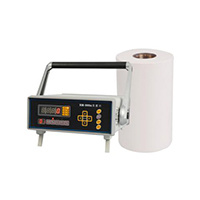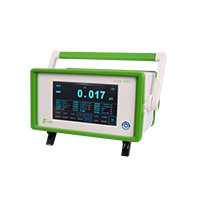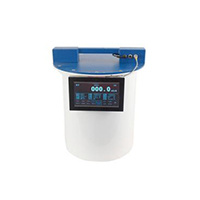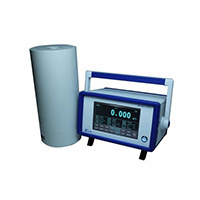Products/PRODUCTS CENTER
Product Classification/PRODUCT CATEGORIES
We focus on nuclear technology applications. Industry experts with decades of experience are the company's wealth, relying on their knowledge and rich experience, the company has been able to grow rapidly.
Magnetic resonance performance test phantom
Modular design, flexible disassembly, replacement and combination, change the collocation and emission sequence, users can arbitrarily combine test components according to the purpose of research and testing, with a variety of test layers, full function, wide test range and so on. Liquid test samples can be replaced. Eleven nuclear magnetic resonance quality control and quality assurance parameters can be tested at the same time, which can fully meet most of the requirements of the conventional daily test, monthly test and annual test of the nuclear magnetic resonance system, and has the function of expansion.
Classification:
Quality control device
Product accessories:

24-hour free hotline
Product Description
Test Items
Modular design, flexible disassembly, replacement and combination, change the collocation and emission sequence, users can arbitrarily combine test components according to the purpose of research and testing, with a variety of test layers, full function, wide test range and so on. Liquid test samples can be replaced. Eleven nuclear magnetic resonance quality control and quality assurance parameters can be tested at the same time, which can fully meet most of the requirements of the conventional daily test, monthly test and annual test of the nuclear magnetic resonance system, and has the function of expansion.
Layer thickness test layerThe layer thickness test layer consists of vertical and horizontal test components, which can measure the layer thickness, layer interval and layer deviation of transverse, sagittal and coronal sections without rotating the phantom.
Grille test layer Gratings effectively measure aspect ratio, linearity, uniformity, signal-to-noise ratio, and image distortion. The resonant frequency can also be measured in conjunction with software testing. And it can be used for the analysis and research of magnetic resonance imaging system such as orthogonal artifact test.
High contrast resolution test layerThe test layer includes two test modules. This layer contains two vertical and horizontal test components, which can compare the resolution of frequency encoding direction and phase encoding direction in one scan without rotating the phantom.
modulation transfer function test layerThe set star-shaped MTF test layer can perform 360-degree fuzzy band observation, which is easy to measure the limit resolution, and can effectively compare the spatial resolution of the phase encoding direction and the frequency encoding direction without rotating the phantom in one scan.
The test component has horizontal and vertical positioning blocks, and the fixed-point line of the positioning block passes through the center of the circle, which is easy to determine the horizontal and vertical directions, and can be calibrated for phantom positioning.
The test assembly has a central positioning block, and one vertex of the positioning block is marked as the center of the test layer. In the measurement of the fuzzy band, it is easy to measure the radius of the fuzzy band through the positioning block, and it is convenient to calculate the magnification. The center positioning block is a uniform density object, and the edge method can be used to calculate the modulation transfer function (MTF) of the system.
Positioning layerThe phantom can be positioned to prevent the phantom from tilting and affecting the test accuracy of each test layer.
Overflow layerIt can accurately measure the signal-to-noise ratio, uniformity and linearity of various magnetic resonance imaging systems, and can be applied to the test of four common magnetic resonance artifacts.
Comply with relevant standards reported by AAPM28 and AAPM34.
Main functions
Spatially Uniformity Scanning Layer Thickness and Slice
Patient positioning system verified spatial resolution of 11 pairs/cm
Geometric Linear Signal-to-Noise Ratio (SNR)
Low Contrast T1 and T2 Measurements
3D Size Evaluation Sample Test
Technical indicators
Star module wedge angle 3 degrees, 120 degrees arrangement, spatial resolution 11LP/cm
YD-H06 (cylindrical): a cylindrical phantom of human tissue equivalent material, with an outer diameter of 20cm and a height of 20cm;
YD-HC06 (spherical): a spherical phantom of human tissue equivalent material, with an outer diameter of 20cm; it can be used for shaft, crown, radial and oblique measurement or test;
Previous Page
Next Page
Previous Page
Next Page
Related Products
Online consultation





